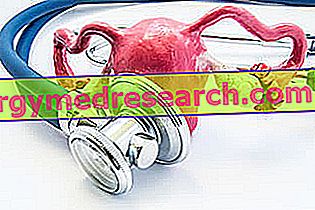What is the Shelf - Life
The words "shelf" and "life" literally mean "shelf or shelf" and "life".
In product categories, shelf-life takes on the meaning of:
"Period that lasts from production to sale, in which it is necessary to keep the total quality of the product intact".
The shelf-life therefore corresponds to the "life of the food" before the purchase.

Below we will talk about shelf-life in the food context .
WARNING! Shelf-life is not synonymous with: " expiration date ", "to be consumed preferably by " and " freshness date ", even if they are all correlated parameters. Shelf-life is not even synonymous with " service life " which, as we shall see shortly, corresponds to the duration of the product from the beginning of use; it applies especially to objects, while for foods it is preferable to use the wording "conservation or preservability".
Beyond the shelf-life time, the product is considered unsuitable for sale and consumption.
The shelf-life determines:
- The maximum sales term.
- The period within which the food is defined as having no risk to the health of the consumer.
Temperature Control
Temperature is a very important factor for shelf-life, both in terms of chemical processes and the proliferation of microorganisms.
Temperature and Chemistry
The degradation of food (as well as of beverages, food supplements, cosmetics and pharmaceutical products) is related to a lowering of shelf-life.
The shelf-life is strongly influenced by chemical reactions. These tend to "age" materials and fabrics. This means that with increasing temperature the shelf-life decreases, and vice versa.
Almost all chemical reactions can occur at normal temperatures (although often at different speeds), but most of them accelerate with heat.
The general rule is that chemical reactions can double in speed for every 10 ° C increase in temperature.
Similarly, it is empirically estimated that by increasing the temperature by 15 ° C (more precisely by 15.8) an increase in the speed of the chemical reactions is obtained, equal to three times.
For example, by storing a material at 35 ° C for 30 days you get the same aging caused by the increase in chemical reactions observable in storage at 20 ° C for 90 days.
As with many other theoretical rules, this too is subject to various exceptions.
It is still indicative and gives the idea of how important temperature control is for the shelf-life of a product.
Temperature and Proliferation
The same principle is applicable to the reactions of enzymes in the cells of tissue or substrate microorganisms (bacteria, yeasts, molds etc.).
As far as tissue enzymes are concerned, these tend to accelerate their function until they run out (time limit), until the raw material is exhausted (substrate limit) or to deteriorate (thermal limit).
Some examples of enzymatic reactions are: the conversion of glycogen into lactic acid in freshly slaughtered meat, the release of sulfur and ammonia in old or poorly preserved fishery products, the maturation of red meat, the curing of raw ham, the browning of fruit and vegetables etc.
In the case of bacterial and fungal metabolism (which also exploits the enzymatic action), increasing the temperature is an increase in all processes, including reproductive capacity. This occurs until heat is reached that slows or kills them.
Some examples of proliferation (beneficial or unwanted) are: white mold around muffled cheeses, green or blue mold in blue cheeses, lactic fermentation of sausages, putrefaction, lactic fermentation of yoghurt etc.
Cold
For the reasons we have just mentioned, it is logical to deduce that lowering the temperature can increase shelf-life or slow down the metabolism of physiological miscroorganisms in food.
Some examples of temperature control for food preservation are: freezing, refrigeration, container insulation, cold chain maintenance, etc.
Packaging
Packaging is a barrier that can help extend the shelf-life of a product. For example:
- Moisture is a decay factor; a packaging with a low humidity transmission, together with the use of desiccants, improves the conservation.
- When the main problem is oxidation, packaging with low oxygen transmission, combined with the use of absorbers, can help prolong shelf life.
- The use of modified atmosphere in the package (replacement of the air with a richer mixture of nitrogen) can extend the shelf life of some products.
- Some packaging has antibacterial properties.
Expiration and Service Life
The shelf-life is the maximum recommended time within which the products can be distributed, and in the course of which the "defined quality" of the goods remains undamaged, despite the phases of distribution, storage and exposure.
Most suggestions for consumption are established with respect to the level of manipulation and possible exposure to normal temperatures.
Ultimately, although I understand an abundant safety margin, these values are empirical. Consuming a food within this period does not always guarantee total safety, so eating it over the limit does not necessarily constitute a health risk.
According to most research and certification bodies, canned foods can be considered safe for an indefinite period, as long as they are not exposed to freezing temperatures or above 32 ° C. If the packages of canned foods are intact, these foods can be considered safe. Instead, it is essential to discard the dented, rusted or swollen casings.
At 27 ° C, acidic foods (tomatoes, fruits, etc.) canned maintain their quality intact within 12-18 months; those with low acidity (meat, vegetables, etc.) reach 2-5 years.
The expiration date is a less ambiguous term than the "preferably to be consumed within" (beyond which most of the food is still edible). A product that has exceeded this limit could still be considered safe, but quality is no longer guaranteed.
In most grocery stores, inventories are minimized by using stock rotation. This system involves moving the goods from the warehouse to the sales area giving priority to products with a shorter deadline, and placing the same commodities more "within the reach of the buyers" on the sales shelves.
This is also very important for consumers, as they can always enjoy goods at the maximum of their conservation potential.
If even this strategy is not sufficient to create a sufficient sales rate, the expired products must be removed from the sale and disposed of; the penalty provided for by the law is a pecuniary sanction and sometimes increased with a more serious disciplinary intervention.
The shelf-life depends above all on the degradation processes of the specific product and changes significantly depending on the case. Mostly it is influenced by several factors such as:
- Exposure to light, heat, humidity, oxygen.
- Mechanical stresses.
- Microbiological contamination (bacteria, molds, etc.).
- Contamination by parasites (mites etc.) or animals (mice, cockroaches, etc.).
The quality of the product is ascertained "methodically" with the analysis of a parameter; for example: concentration of a chemical compound, microbiological index or moisture content.
For some foods, health problems that could arise from the consumption of a NOT more edible foodstuff are essential to determine the average shelf life.
Bacterial contaminants (in the form of heat-resistant spores) are inevitable and ubiquitous. Foods that are "too old" suffer from bacterial proliferation and become potentially responsible for food poisoning.
However, shelf life is not considered a sufficiently accurate indicator of the time in which food can be stored. For example, if it is refrigerated properly, pasteurized milk can remain fresh for another five days after its expiration date. On the contrary, if the milk already contains a harmful bacterial charge, the "preferably to be consumed" parameter has no validity.
Some food products can be enriched with antioxidants and preservatives to extend their shelf life.
As we have seen, some companies exploit the induction seal (sealing cap) or vacuum or modified atmosphere method to promote the shelf life of oxygen-sensitive products.



